What’s Up?
I hit the sack at 7:30pm on Sunday evening.
Today is Monday 19 February 2024. I woke to the alarm at 2:40am after sleeping a handsome 7+ hours. As Jim was kindly driving me to the airport, I began working on this blog post at 4:15am and am hoping to finish it after I check in. I am, of course, headed to Homer, AK, two IPTs, and lots of eagles. Wherever you are and whatever you are doing, enjoy.
Please remember to use the B&H links that are found on most blog pages and to use the BIRDSASART discount code at checkout when purchasing your new gear from Bedfords to get 3% back on your credit card and enjoy free second-day air FedEx. Please, also, consider joining a BAA IPT. You will be amazed at how much you will learn!
If an item — a Delkin flash card, or a tripod head — for example, that is available from B&H and/or Bedfords, is also available in the BAA Online Store, it would be great, and greatly appreciated, if you would opt to purchase from us. We will match any price. Please remember also to use my B&H affiliate links or to earn 3% cash back at Bedfords by using the BIRDSASART discount code at checkout for your major gear purchases. Doing either often earns you free guides and/or discounts. And always earns my great appreciation.
DeSoto Spring IPT
Sign up for this trip soon to explore the possibility of sharing an AirBnB with multiple IPT veteran Jim Miller and me. Details below.
Save 15%!
If you’d like to try out a new lens or if you need a lens for a specific trip or project (or for an IPT), LensRentals.com is the only way to go. To save 15%, simply click on the logo link above, arrange for your rental, and type in BIRDSASART15. If you type the gear you are looking for in the search box, it will pop right up. LensRentals.com offers affordable insurance. You can decline it, opt for LensCap: Damage Only, or select LensCap: Damage & Theft. Then hit PROCEED TO CHECKOUT. After you enter all of your info but before completing your order, be sure to scroll down to Promo Code box and enter the BIRDSASART15 code to save 15%.
I checked on renting a Sony FE 70-200mm f/2.8 GM OSS II lens for a week. The cost is only $122.00. LensCap: Damage Only coverage can be added for a very low $18.00. Going with LensCap: Damage & Theft would be $27.00. The shipping charge varies. They offer an interesting program called Lensrentals HD. By signing up for this shipping discount program ($99.00/year), you’ll get free Standard Shipping on all the orders you place.
Renting a Sony 600mm f/4 GM OSS lens for a week will cost you $536.00. The two coverage options come in at $76.00 or $114.00. Less your 15% discount when you enter the BIRDSASART15 code into the Promo Code box at checkout and enter the BIRDSASART15 codeine the Promo Code box at checkout to save 15%.
Remember, to save the 15% on your rental you must start your search by clicking on the logo above, or on this link: LensRentals.com


B&H
To ensure that I get credit for your B&H purchases, you can always click here. The tracking is invisible but greatly appreciated. And, you can use your PayBoo card. You must use the website to order. B&H will reopen on Fri April 14. Thanking me for the past 4000 educational blog posts could not be any easier and will not cost you one penny. Please shoot me your B&H receipt for major purchases.
Many folks have written recently stating that they purchased a Sony a1 from B&H and would like their free membership in the Sony 1 Info and Updates Group, a $150.00 value. When I check my affiliate account, their orders have not been there. When I let them know that they get credit for B&H purchases only if they use one of the many B&H affiliate links on the blog or begin their searches with this link, they are always disappointed. If in doubt, please contact me via e-mail and request a BH link. I am always glad to help and to guide you to the right gear.
Bedfords Simplified
Click here to start your search. Choose standard shipping, and when you get to the payment page, enter BIRDSASART in the discount code box and hit apply. You will be upgraded to free second day air Fed-Ex and receive 3% cash back on your credit card once your stuff ships. Either is greatly appreciated by yours truly.
Bedfords Amazing BAA Discount Policy
Folks who have fallen in love with Bedfords can now use the BIRDSASART coupon code at checkout to enjoy a post-purchase, 3% off-statement credit (excluding taxes and shipping charges) on orders paid with a credit card. The 3% credit will be refunded to the card you used for your purchase. Be sure, also, to check the box for free shipping to enjoy free Second Day Air Fed-Ex. This offer does not apply to purchases of Classes, Gift Cards, prior purchases.
Visit the Bedfords website here, shoot Steve Elkins an e-mail, or text him on his cell phone at (479) 381-2592.
Gear Questions and Advice
Too many folks attending BAA IPTs and dozens of photographers whom I see in the field and on BPN, are — out of ignorance — using the wrong gear, especially when it comes to tripods and more especially, tripod heads. And the same is true in spades when ordering new camera bodies or lenses. My advice will often stave you some serious money and may help you avoid making a seriously bad choice. Please know that I am always glad to answer your gear questions via e-mail. If you are desperate, you can try me on my cell at 863-221-2372. Please leave a message and shoot me a text if I do not pick up.
|
|
|
This image was created on 28 March 2023 at Fort DeSoto Park in Tierra Verde, FL. Standing at full height, I used the handheld Sony FE 400mm f/2.8 GM OSS lens and The One, the Sony Alpha 1 Mirrorless Digital Camera). The exposure was determined via Zebra technology with ISO on the Thumb Dial. ISO 800. 1/1250 sec. at f/2.8 (wide open) in Manual mode. When evaluated in RawDigger, the raw file brightness was determined to be dead-solid perfect (ho hum). AWB at 8:11:01am on cloudy morning. Tracking: Zone/AF-C with Bird Face/Eye detection enabled performed to perfection. Be sure to click on the image to enjoy a high-res version. Image #1: the original — Sanderling — non-breeding plumage in flight |
An Alternate Photographic Strategy: Shoot Wide and Crop!
When I used film, I worked very hard at getting as close as possible to my free and wild subjects. And for 24 years with digital, I always tried to maximize the number of pixels on the subject. Heck, my first digital keeper was created at 1200mm. In recent years, however, I have learned that on occasion, shooting wide and cropping is a viable option. Cropping became much more of a reality with the superb images files of the Sony a-1. And the same can be said about other high-end mirrorless bodies.
The Advantages
Shooting wide (often without a teleconverter) offers many advantages:
1- Faster initial focusing acquisition.
2- Greater depth of field.
3- It is easier to keep a rapidly moving subject in the frame.
4- More accurate tracking (due to the wider aperture as a result of not using a TC).
5- Working without a TC allows for faster shutter speeds without having to increase the ISO.
6- The chances of clipping the action are greatly decreased.
|
|
|
This image was created on 28 March 2023 at Fort DeSoto Park in Tierra Verde, FL. Standing at full height, I used the handheld Sony FE 400mm f/2.8 GM OSS lens and The One, the Sony Alpha 1 Mirrorless Digital Camera). The exposure was determined via Zebra technology with ISO on the Thumb Dial. ISO 800. 1/1250 sec. at f/2.8 (wide open) in Manual mode. When evaluated in RawDigger, the raw file brightness was determined to be dead-solid perfect (ho hum). AWB at 8:11:01am on cloudy morning. Tracking: Zone/AF-C with Bird Face/Eye detection enabled performed to perfection. Be sure to click on the image to enjoy a high-res version. Image #1: Sanderling — non-breeding plumage in flight
|
Huge Crops
With sharp properly exposed-to-the-right raw files, relatively huge crops can yield excellent images with lots of detail while retaining image quality. As most shorebird are fast, erratic fliers, working wide is often the way to go.
|
|
|
This image was created on 18 January 2024 at La Jolla, CA. Standing at full height, I used the handheld Sony FE 400mm f/2.8 GM OSS lens and The One, the Sony Alpha 1 Mirrorless Digital Camera). The exposure was determined via Zebra technology with ISO on the Thumb Dial. ISO 4000. 1/2500 sec. at f/2.8 (wide open) in Manual mode. When evaluated in RawDigger, the raw file brightness was determined to be perfect (ho hum). AWB at 7:11:05am on cloudy morning. Zone/AF-C with Bird Face/Eye detection enabled performed to perfection. Be sure to click on the image to enjoy a high-res version. Image #2: Brandt’s Cormorant in flight — wings fully down flight pose |
A Big (but actually small) Surprise
I am not sure what led me to press the shutter button in this situation as the bird in the original frame was a speck. Raising the ISO to 4000 for the dark subject as I saw it coming ensured a very good exposure. That, and careful processing led to the creation of a fine-looking image. I love the wings down flight pose and an Average Blur Color Balance adjustment yielded a natural look.
|
|
|
Click on the composite to view a larger version and be even more impressed. The Art & Science of Photographing Birds in Flight with the Sony α-1 9
|
The Art & Science of Photographing Birds in Flight with the Sony α-1
by Arash Hazeghi and Arthur Morris
First of all, if you use Nikon or Canon (or Olympus or Fuji) gear, do not be put off by the title. While a portion of the guide deals with the Sony α-1, there is a ton of priceless information, tips, and techniques that can help you become a better flight photographer. No matter what system you are using. If you do not use an α-1, be sure to read down to the bottom to save a few bucks.
Arash Hazeghi and Arthur Morris have created the definitive and most comprehensive ever treatise on photographing birds in flight. With more than sixty years of experience photographing birds, they know what you need to know but have not figured out yet! You will be astounded by the depth of their knowledge and the tips they have to offer. More than six months in the making, the guide contains 229 pages, 24,321 words,97 exceptional and inspirational flight images — each with a legendary, enlightening BIRDS AS ART caption, and 22 screen captures. The guide contains a wealth of useful, practical, and for the most part — never-before-available information.
Purchase
Click here to purchase your copy in the BAA Online Store.
What Everyone Will Learn
We will teach you the basic concepts that you need to master to become a great flight photographer along with the techniques used by the world’s best flight photographers.
You will learn that most any telephoto lens can be perfect for flight photography in a given situation; focal lengths for the images in the book range from 200mm to 1200mm and everywhere in between.
We discuss the merits of various lenses in depth, including and especially comparing the 400mm f/2.8 lenses with the 600mm f/4s.
We guide you in getting your hands on the flight photography lens that will best meet your needs. We offer a variety of handholding and rest position tips and include tips on working with a big lens on a tripod when working with a flight lens that is otherwise too heavy for you.
Both authors offer their thoughts on getting the right exposure when photographing birds in flight. You will learn to get the right exposure on foggy days and even when photographing black birds in white sky conditions.
You will learn the tremendous importance of pre-focusing, of finding the bird in the viewfinder quickly, acquiring focus almost instantly (with tips on doing all three).
You will learn the role of image stabilization in flight photography and the best settings.
Both authors share their thoughts on using the focus range limiter switch. In the same vein, you will learn to use Direct Manual Focus to make your flight photography life easier.
All will learn about the best wing positions and the importance of the background with images of birds in flight. With lots of examples.
You will learn about the best shutter speeds (and the best aperture) to use when photographing flying birds.
You will learn to photograph flight while seated and the many advantages of doing so.
You will learn the best methods of controlling high ISO noise.
All will learn to format their flash cards properly and safely.
You will learn what to do when your AF system is temporarily blinded.
All will learn the huge effect that wind strength and direction has on flight photography and to evaluate the quality and direction of the light on both sunny and cloudy days.
You will learn why it is vitally important to shoot aggressively when photographing birds in flight.
You will learn to carefully observe and evaluate a variety of bird behaviors that may shine light on some excellent opportunities for photographing birds in flight. And about getting into the best position from which to photograph.
You will learn to be a much better flight photographer.
What Sony Folks Will Learn
Exactly how Artie uses Zebras to come up with perfect exposure after perfect exposure.
The fine points and recommended settings for Optical Steady Shot (OSS).
The concept of Auto-Focus (AF) tracking in the α-1.
Everything there is to know about the complex Sony autofocus system.
About all the AF patterns, how to quickly switch them, and about those favored by each author. And why.
The Tracking and Non-tracking AF patterns. When and why Arash uses Non-Tracking Zone. And why Artie uses only two AF patterns.
How to set and use Bird Face-Eye detection for flight photography.
How and why to assign various custom functions to the various programmable buttons on the α-1 body.
The perfect settings for the many, many Menu items that are vitally related to flight photography.
How and why the Sony α-1 uses both contrast and phase detection AF to determine focus (and the benefits thereof).
Which are the best memory cards for the Sony α-1.
To quickly access frequently used menu items.
Non-Sony α-1 Discount
Using the honor system, folks who do not use a Sony α-1 body are invited to click here to save $25.00 on the purchase price of the guide.
|
|
|
Be sure to click on the composite to view a larger, high-res version. All images from 2023 Fort DeSoto Spring IPTs. Clockwise from upper left around to center: Snowy Egret in breeding plumage with crest blowing; Osprey striking; Brown Pelican sunrise silhouette; Royal Terns copulating; Marbled Godwit striding; Royal Tern courtship feeding; Snowy Egret hunting; Laughing Gull in breeding plumage along flight; Reddish Egret in flight with killifish. |
Unsolicited via e-mail from Pete Myers
I just spent 4 days in the field in a graduate course in bird photography taught by Artie Morris at Fort DeSoto. After almost 50 years of experience pointing cameras at birds from the Arctic to Tierra del Fuego, New Zealand and beyond, I thought I was good enough. But what I learned from Artie in just four days has taken me to a whole new level. As he aptly puts it, “birds as art,” not simply bird photography. One of those 4 days was the most satisfying I’d ever experienced, anywhere. The IPT left me euphoric about what I’d learned, and frighteningly committed to recreating my portfolio with the techniques and insights he taught me.
Unsolicited via e-mail from IPT veteran Eugen Dolan
Arthur, Thank you very much for your overwhelming infectious enthusiasm that helped get me up on some mornings. Also, your ability to express yourself- and explain in great detail why you like or may not like an image – was very helpful in allowing me to better analyze my images. Eugen
Via e-mail from Jim Miller
I can’t stop thinking about how much fun the DeSoto IPT was, and how much I learned. There were so many things that suddenly made perfect sense after I had been confused for so long. Thank you very much for the wonderful trip, and for being a great teacher. As I worked through the raw files last week, I realized what a fantastic lens the 600 IS is. Thanks for the rental! Maybe someday I will be able to afford one. Some images for critique are attached. Thank you again, Artie. It was really wonderful to be with you and learn from you.
Via e-mail from Lee Sommie
I want to thank you for making the Fort DeSoto IPT; it was a fun and educational experience for me. I truly did not want the adventure to end. I now look through the viewfinder with an artist’s mindset. And the real bonus was making new friends with fellow students. Thank you for sharing your knowledge and enthusiasm for wildlife photography. I had a great time with you and look forward to more adventures on future IPTs.
Via e-mail from Muhammad Arif
I had a great time at Fort De Soto. Thank you for all the instruction, for your help and pointers; my photography has already improved tremendously, and I’ve never made such good bird photos before. I wish I could’ve joined you on Monday and Tuesday morning as well, but work got in the way. It was also nice meeting the folks on the IPT. Thanks again for everything and I hope to join you at a future IPT sometime again.
|
|
|
Fort DeSoto in spring is rife with tame birds, many in full breeding plumage. Click on the composite to enjoy a larger version. Clockwise from upper left around to center: Laughing Gull landing on head of Brown Pelican, Laughing Gull in flight, Reddish Egret sunrise silhouette, Great Blue Heron with needlefish, Yellow-crowned Night Heron with ghost crab, Roseate Spoonbill, Sanderling in breeding plumage, and white morph Reddish Egret in glorious breeding plumage. |
The 2024 Spring Fort DeSoto Instructional Photo Tour (IPT)
The Spring Fort DeSoto IPT: Wednesday 8 May through the morning session on SAT 11 May 2023. 3 1/2 Days: $1899.00 includes three working brunches. Limit six photographers. Openings: 5.
Fort DeSoto, located just south of St. Petersburg, FL, is a mecca for terns and gulls, wading birds, and shorebirds in springtime. Though DeSoto can be great any day of the year, spring is my very favorite time to be there as many of the birds will be in full breeding plumage. Simply put, DeSoto is the new Ding Darling. Migrant shorebirds are in abundance, and many are exceedingly tame. We should have great chances on Royal and Sandwich Terns and both white- and dark-morph Reddish Egrets. Great Egret, Snowy Egret, Great Blue Heron, Tricolored Heron, and White Ibis are easy as well and we will almost surely come up with a tame Yellow-crowned Night-Heron or two along with some American Oystercatchers. We will enjoy lots of great flight photography, especially with the Brown Pelicans.
Act fast to explore the possibility of sharing an AirBnB with Jim Miller and me. Doing so would greatly reduce the cost of lodging for this great trip.
|
|
|
Again, Fort DeSoto in spring is rife with tame birds, most in breeding plumage. Click on the composite to enjoy a larger version. Clockwise from upper left around to center: Laughing Gull in flight, Yellow-crowned Night-Heron, Sandwich Terns copulating, Roseate Spoonbill, Great Egret with reflection, breeding plumage Short-billed Dowitcher, American Oystercatcher, Royal Tern, white morph Reddish Egret, and Snowy Egret in marsh. |
In Addition!
We should also get to photograph a variety of other shorebirds including Black-bellied, Semipalmated, Wilson’s, Snowy, and Piping Plovers, Willet, Dunlin, Short-billed Dowitcher, Marbled Godwit, and most especially, Red Knot. On the May trip, many of the shorebirds will be in their handsome breeding plumages. In spring the T-shaped peninsula and the newly formed sandbar, Outback Key, are literally packed with avian treasures.
With just a bit of luck, we may get to photograph one of Florida’s most desirable species: Roseate Spoonbill. And we will surely get to do some Brown Pelican flight photography. With luck, they will have Laughing Gulls landing on their heads. And though not guaranteed, Wood Stork might well be expected. And we will be on the lookout for a migrant passerine fallout in the event of a thunderstorm or two. I almost forgot to mention — Laughing Gulls in breeding plumage are to die for!
You do NOT need a fast super-telephoto lens to do this trip!
|
|
|
Yes, Fort DeSoto in spring is rife with tame birds, most in breeding plumage. Click on the composite to enjoy a larger version. Clockwise from upper left around to center: breeding plumage Dunlin, dark morph Reddish Egret displaying, Laughing Gull vertical front-end portrait, Laughing Gull with prey item, landing on head of Brown Pelican, breeding plumage Royal Tern displaying, Royal Terns — pre-copulatory stance, Laughing Gulls copulating, Laughing Gull head portrait, breeding plumage Sandwich Tern with fish, and a rare treat, a breeding plumage White-rumped Sandpiper. |
What You Will Learn on a DeSoto IPT
- 1- The basics and fine points of digital exposure; how to get the right exposure every time after making a single test exposure (or before if you are using SONY gear).
- 2- How and why to work in Manual mode (even if you’re scared of it).
- 3- How to approach free and wild birds without disturbing them.
- 4- Lots about bird behavior and how to use that knowledge to help you create better images.
- 5- To age and identify many species of shorebirds including various sandpipers, plovers, dowitchers, and possibly yellowlegs.
- 6- To spot good situations and to choose the best perspective.
- 7- To see, evaluate, and understand the light.
- 8- To design pleasing images by mastering your camera’s AF system.
- 9- And perhaps most importantly, to evaluate wind and sky conditions and understand how they affect bird photography.
- 10- More than you could ever imagine.
|
|
|
You got it by now! Fort DeSoto in spring is rife with tame birds, most in breeding plumage. Click on the composite to enjoy a larger version. Clockwise from upper left around to center: Roseate Spoonbill, immature Brown Pelican in flight, the heron/egret hybrid, American Oystercatcher feeding, immature Royal Tern on railing, Great Egret morning silhouette, Black Skimmer in surf, and underside head portrait of Great Blue Heron. |
The Details
Morning sessions will run about two and one-half hours; afternoon sessions about two. There is never a set schedule on an IPT — we adapt to the conditions. On cloudy mornings with the right wind, we may opt to photograph till 11:30 or so and skip the afternoon session. That especially when the afternoon weather is looking iffy. We may opt to visit a great North Tampa rookery if conditions warrant that.
There will be a Photoshop/Image Review session during and after brunch (included) each of the three full days. That will be followed by Instructor Nap Time. This IPT will run with only a single registrant as I do not like disappointing anyone. The best airport is Tampa (TPA). Once you register, you will receive an e-mail with lodging information. Do know that it is always best if IPT folks stay in the same general area (rather than at home or at a friend’s place a good distance away). For folks who register soon, the is an excellent chance that we can share an AirBnb to reduce lodging and meal costs and maximize your learning opportunities.
Folks attending this IPT will be out in the field as early as possible and stay out late to take advantage of sunset colors. Doing so will often present unique photographic opportunities, opportunities that will be missed by those who need their beauty rest and those who need to get home for a proper dinner. I really love it when I am leaving the beach at 9:30am on a sunny morning after a great session just as a carful or two of well-rested photographers are arriving … We will be getting wet.
Your non-refundable $599 deposit is due now. Credit cards are OK for that. You can register by calling Jim or Jennifer during weekday business hours at 863-692-0906 with a credit card in hand. Once you leave a deposit, you will receive an e-mail with your balance statement and instructions for sending your balance check three months before the trip begins. If you wish to pay in full right off the bat, you can make your check out to BIRDS AS ART and send it via US mail here: BIRDS AS ART, PO BOX 7245, Indian Lake Estates, FL 33855. You will receive a confirmation e-mail with detailed instructions, and clothing and gear advice two months before the trip. Please shoot me an e-mail if you plan to register or if you have any questions.
IPT veterans and couples or friends signing up together may e-mail for discount information. If you have any questions, or are good to go for one of these great trips, please let me know via e-mail or give me a call on my cell phone at 863-221-2372 for more info.
Typos
With all blog posts, feel free to e-mail or to leave a comment regarding any typos or errors.


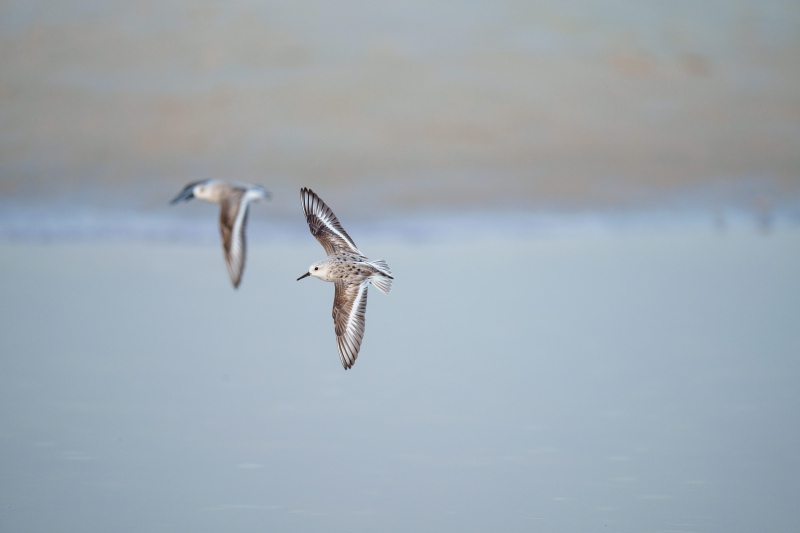
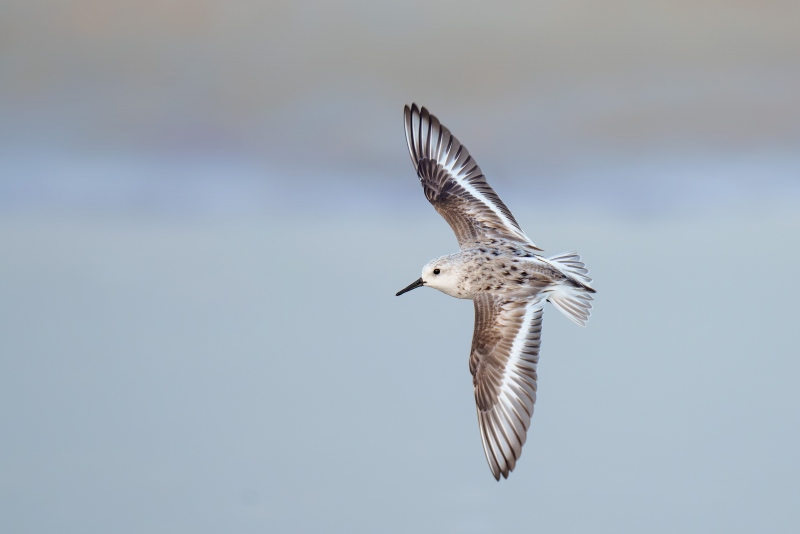
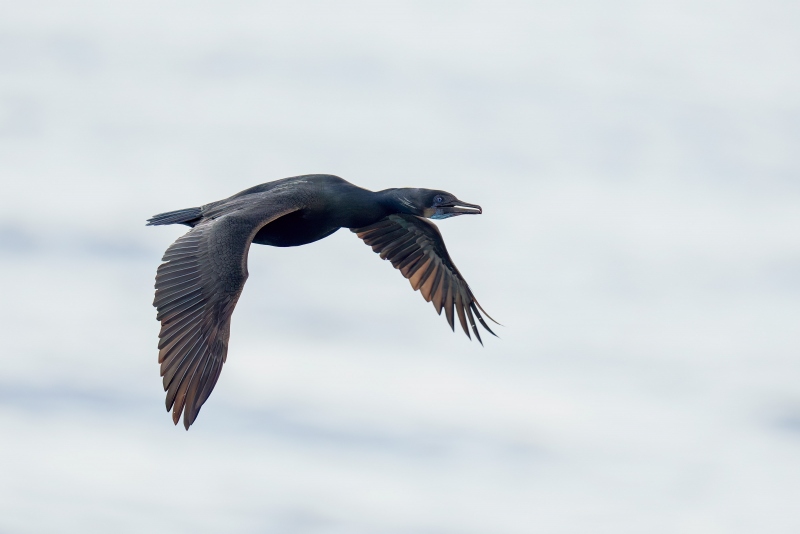
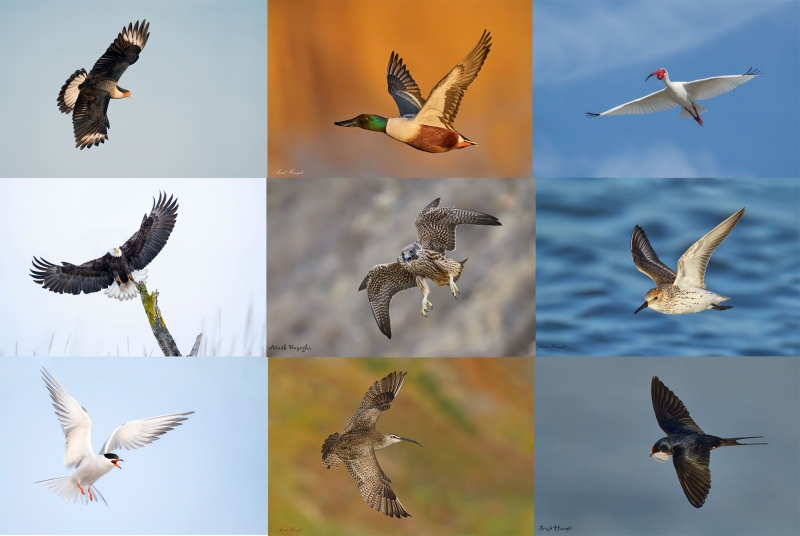
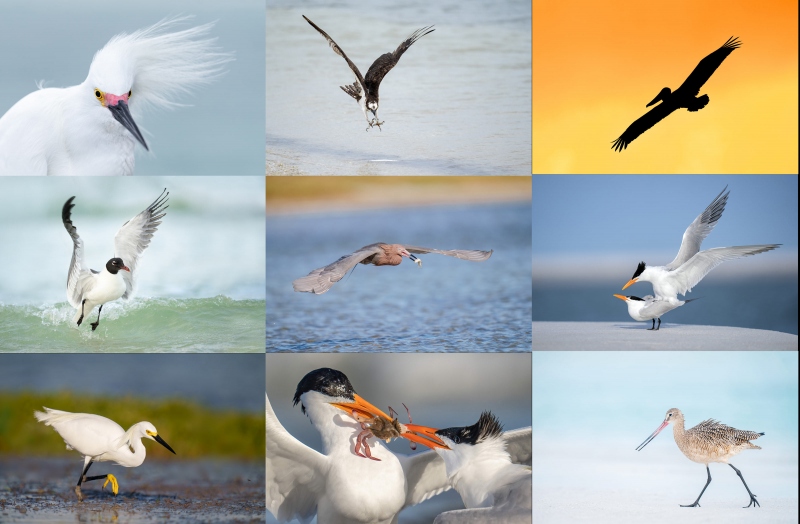
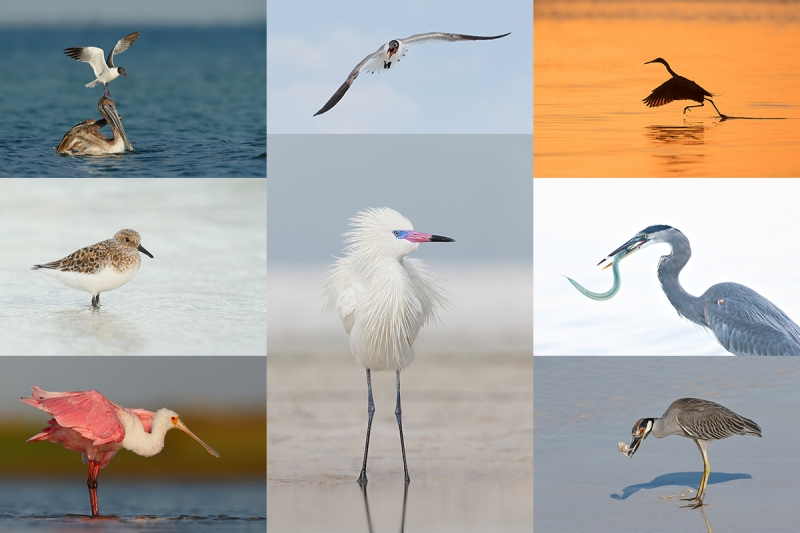
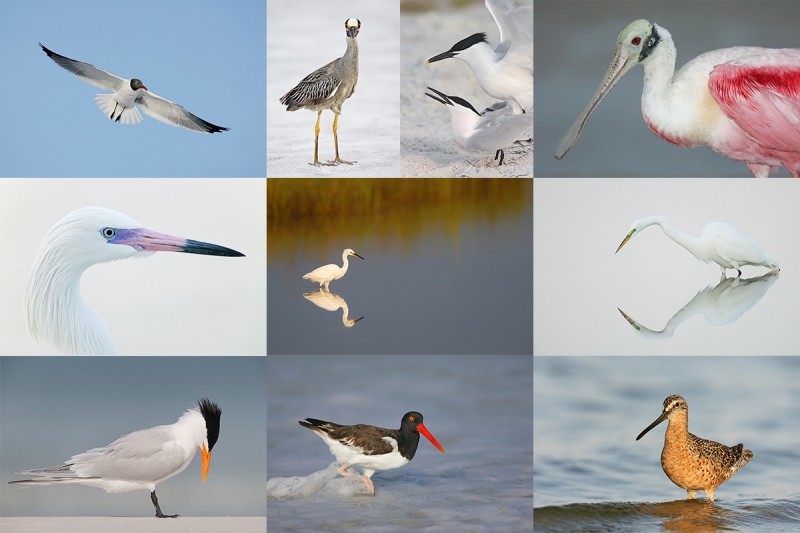
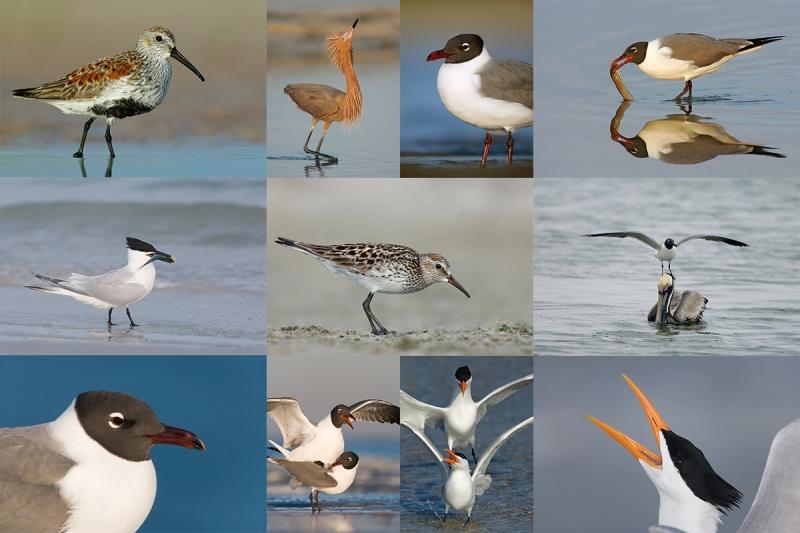
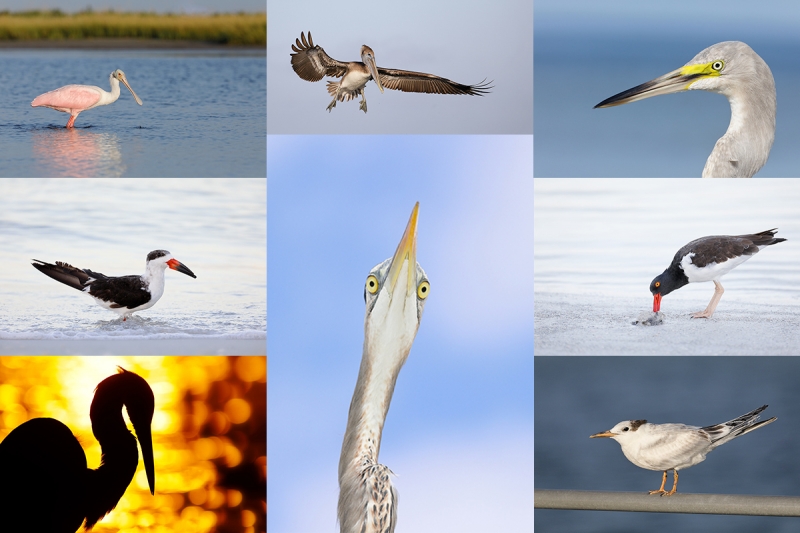













Artie like both images, the background colors in the sanderling image are great and I really like the wing position of the cormorant. Hope you are having a great time in Homer.
Thanks, Monte. We still have 28 minutes to go — will be arriving at 3:10 or so.
with love, a
If i was driving ya would have been there and dancing in the rain…..but ol East Bob Man is back in Wisconsin.
Always with love b
For web purposes, cropping is usually fine, though in my experience where that strategy frequently breaks down is in the print. Have a great, safe, and productive trip up north.
Adam,
Please note: the file size of the cropped image is 33.4M. John Shaw once stated that a sharp images from a 4MP digital camera body “blows film away.” I would, therefore, say that you are dead wrong.
with love, artie
The magical Art of the missing bird never ceases to amaze me. Artie the Magnificent at his best. I agree with Mr. Eastman the Sanderling is a capture of one of God’s beauties and the Cormorant is what Bob said to a T. I was surprised when I enlarged it. Thanks for sharing. Have a safe trip and break a leg or something similar.
Thanks, Jeff. At first, I did not get your reference to the “missing bird.” But I figured it out. Did that in one swipe with the new Remove Tool. Easy peasy. As detailed in the Digital Basics III Video Series.
Thanks for the good wishes, with love.
a
Artie
I am glad your off to Homer safe, and praying for snow and sub temps for ya!!!
I would guess in today’s photography with digital that a very high percentage of photos are cropped or some even add a little bit.
I believe you told me your great friend Anita likes to work a little wider and crop as she prefers not to add the tele.
I like both of todays the Sanderling pattern is really nice and the Cormorant is great as well, to me i can see the eye pretty well in such a dark bird i like that.
Have a great Homer trip my friend. 🙂
Always with love b
Thanks, Robert. I was amazed at how well the cormorant turned out.
You will be missed in Homer.
with love, artie